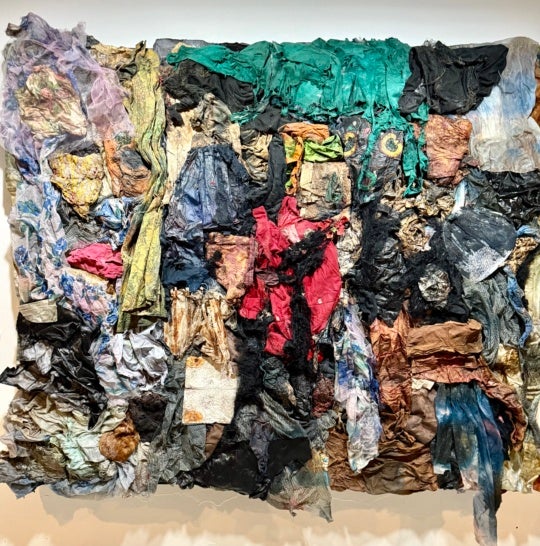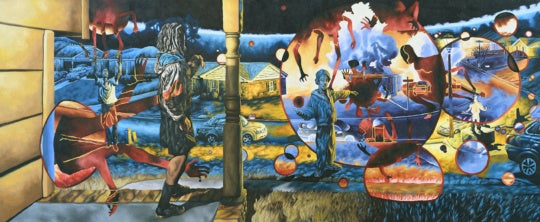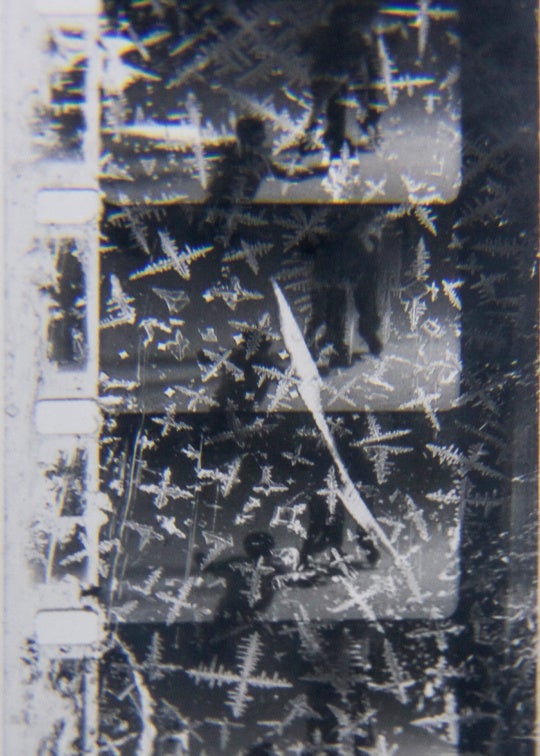
“Yes, there is good art outside of New York and Los Angeles.” So David Butler, executive director of the Knoxville Museum of Art since 2006, assured us, and that’s the art that will be shown at the KMA going forward. “Regional” is no longer a word to avoid; instead it will be boldfaced, the primary reason to come to the museum, the area’s preeminent art institution. Butler strongly believes that art by talented artists from Tennessee and its environs will draw substantial audiences to Knoxville—local viewers but also viewers from elsewhere—signaling a new direction for the museum in keeping with its just completed $6-million facelift.
Beginning in 2013, as part of the renovation, the elegant 1990 Edward Larrabee Barnes building was restored to its original pristine condition, the infrastructure modernized, gallery space added, and the outdoor garden and sculpture park completed. While very proud of the museum’s collections, exhibitions and programming—an acquisitions fund was recently established—Butler acknowledged that the KMA cannot compete with bigger, richer institutions. What it can do, and do well, is to explore in depth the multilevel cultural legacy of East Tennessee and showcase artists who are part of its past and present. As well, it can trace the influence of local artists who have made their mark outside Tennessee. While not every artist featured is local, each will have connections to the region. Ansel Adams is one such artist whose photography exhibition (January 31-May 4) included three rare and beautiful prints of the Smoky Mountains taken in 1948, when Adams made his little known visit to the state.
The cleanly delineated North Garden is one of the most visible additions to the KMA; the other is the Ann and Steve Bailey Hall, a spacious glass-fronted, skylighted gallery housing Richard Jolley’s new permanent installation, which opened May 4. Called Cycle of Life: Within the Power of Dreams and the Wonder of Infinity, it’s an imposing, light-gathering, seven-part, steel-and-glass construction that is ambitious in both form and content, a summation of themes that have preoccupied him throughout his career, he said.

Jolley, a noted glass artist who shows internationally, has lived in the Knoxville area since 1975. His magnum opus to date, Cycle of Life begins with Primordial, represented by a poplar forest with trees cunningly studded by blown glass buds; Jolley made most of the countless blown and cast glass components himself. The striking imagery—two Adam and Eve-like couples, a flock of flying birds, a giant head, and a Tree of Life—are motifs that seem inspired by Genesis but also encompass creation myths from other cultures. The wall reliefs extend the entire 105 feet of the gallery and reach upward 30 feet. Suspended overhead is Sky, with its effervescent silvery globes, sparkling geometric shapes and transparent blue glass bubbles suggesting a view of constellated, intergalactic heavens.
Butler is ably abetted in his advocacy of the local by Stephen C. Wicks, who has deep roots in the region but also broad knowledge of contemporary trends. He was the KMA curator from 1990 to 2003, and returned in 2006. Wicks organized the reinstallation of the museum’s collections with loans from other sources to give an overview of 150 years of East Tennessee painting. It includes works by Beauford Delaney, the gifted, re-emergent African American artist born in Knoxville, who found his way to Paris in the 1950s and died there in 1979. Wicks also oversaw Currents, an ongoing, rotating exhibition of recent acquisitions in which artists from Tennessee and the region, such as Atlanta-based artist Sarah Hobbs, are shown in dialogue with international artists such as Loretta Lux from Germany. In a further celebration of the medium, Facets of Modern and Contemporary Glass (through July 27), curated by Wicks, featured innovative works by a global selection of artists, among them Fred Wilson, Christopher Wilmarth, Rashid Johnson, Lino Tagliapietra and Ivan Navarro.
“It’s a good moment for Knoxville, a game changer,” Butler said.
Lilly Wei is a New York-based critic and curator whose writing has appeared in such publications as Art in America, Art & Auction, and Artnews.




